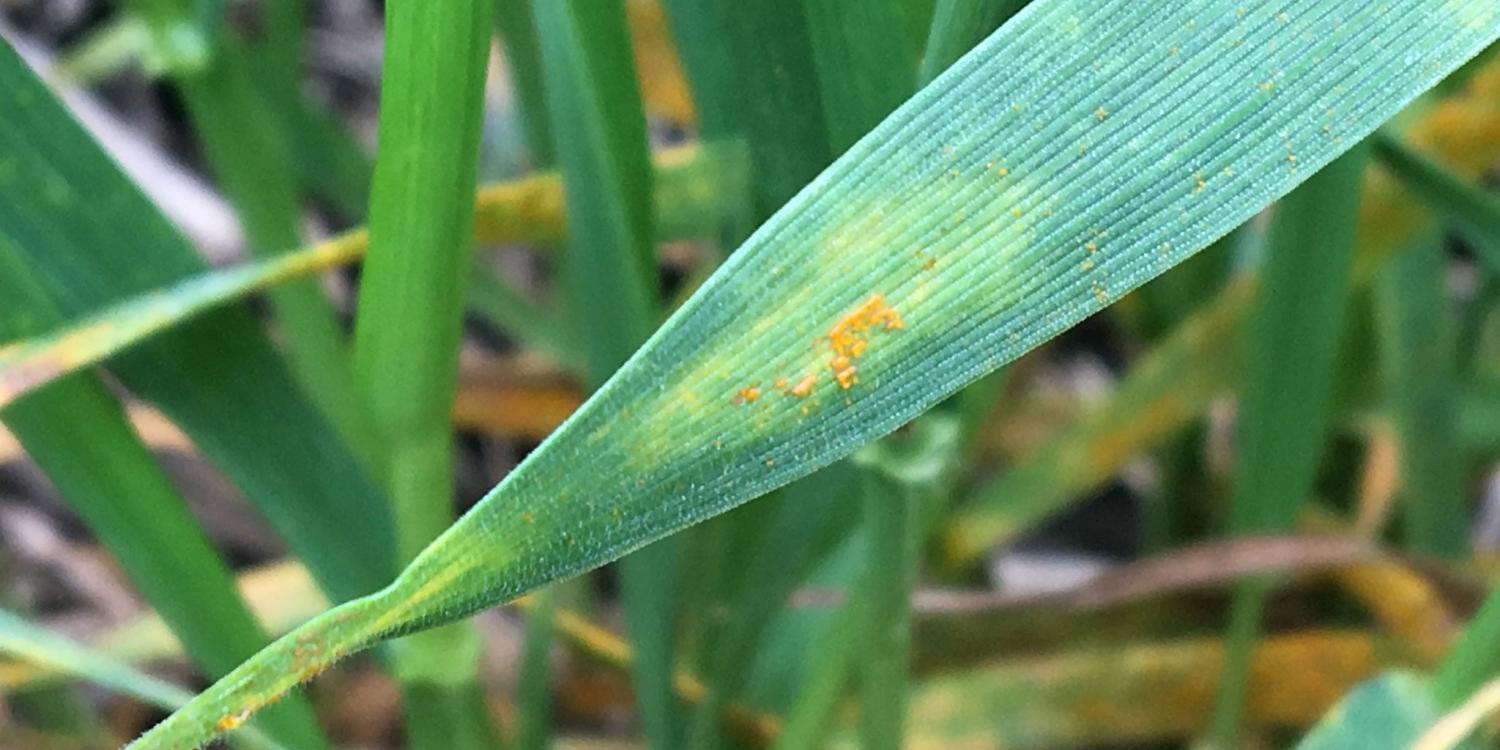
If conditions are right, stripe rust can wipe out a crop of winter wheat, costing Oregon farmers millions of dollars. In a state where wheat is the sixth-most valuable commodity, a disease that can devastate crops casts a large economic shadow on the state’s economy.
Plant breeders work hard to develop wheat varieties resistant to stripe rust, but it’s an ongoing issue as the disease pathogen continually evolves and overcomes genetic resistance that breeders generate. This leaves growers in a situation where expensive fungicide chemistries must be applied to protect the cash crop and food security. Climate change is having an impact, too. Weather variability allows different races of the pathogen to overwinter and multiply, when in the past conditions wouldn’t have allowed it.
The pathogen is present most years, but wet weather and humidity are conducive to the spread of the disease. The later stripe rust is found during the growing season the better because the pathogen doesn’t have time to go through replications that allow it to have exponential growth.
A fungicide application can cost anywhere from $4-$35 an acre and that’s just the product. Labor, fuel, tractor maintenance and other outputs add to the price, making control of stripe rust an important issue for growers. The most common chemical used is propiconazole, which is priced at $4 per acre. It can be effective in controlling stripe rust and keep it from spreading, but under certain conditions needs to be applied every three weeks.
To help find the right solution, Oregon State University Extension Service and research faculty in Morrow and Umatilla counties are working with growers and looking at the effectiveness of new fungicides. In Umatilla County, Christina Hagerty, OSU dryland cereal pathologist and associate professor in the OSU College of Agricultural Sciences, researches the new formulations coming out every year and reports her findings to farmers who are making complicated decisions. Data are published annually through the American Phytopathological Society, Plant Disease Management Reports.
For her research, Hagerty, who is based at the OSU Columbia Basin Agricultural Research Center, and Grayson Namdar, her faculty research assistant, apply fungicides in a checkerboard pattern to susceptible varieties in trial fields and make weekly visual inspections. The trial fields are harvested, and yield, protein and test weight information are collected. The results give growers the options of knowing if less-expensive fungicides are as effective as more expensive fungicides.
In Morrow County, Larry Lutcher, OSU Extension crops specialist and professor in the OSU College of Agricultural Sciences, covered hundreds of acres in the wheat-swept countryside looking in strategic locations for stripe rust. When he found stripe rust, Lutcher talked to farmers, who talked to their neighbors and the word spread. Knowing they have the fungus in their wheat allows them to plan the most efficient and cost-effective spray schedules.
Lutcher gave treatment recommendations that accounted for about 65,000 acres of wheat in the region with a net savings to farmers of $2.3 million.